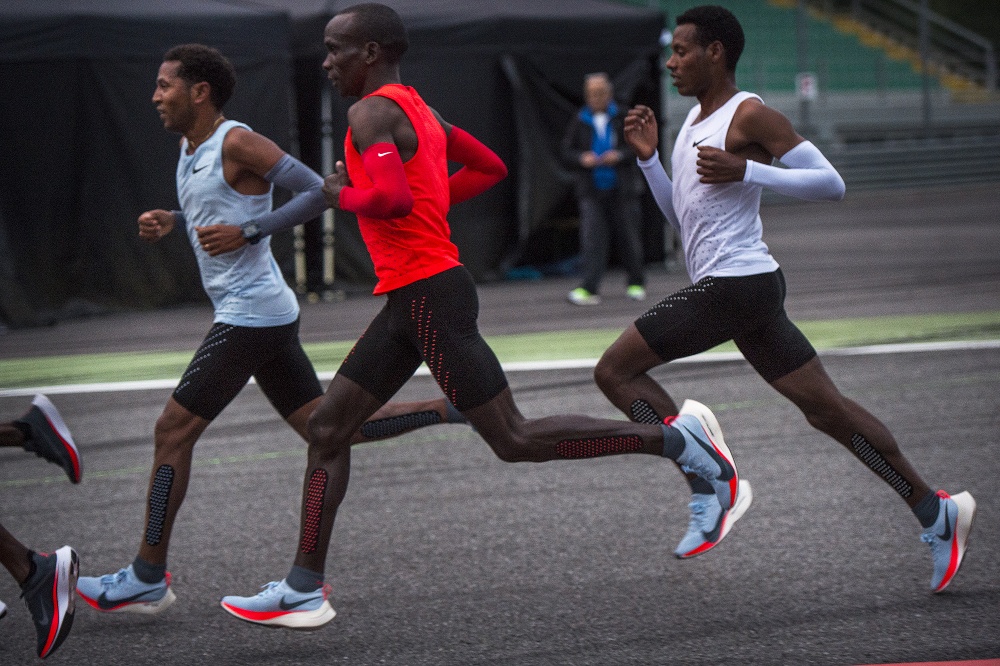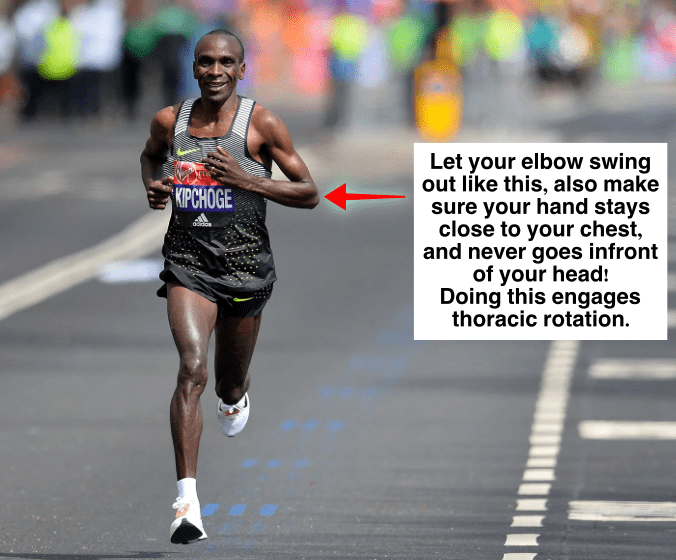One of the biggest aspects of running that goes unrealized is that your upper body must rotate in order to help pull your foot off the ground and to deflect impact off the lower back. There’s very little, if not, no convincing evidence against this. There’s evidence that if your upper body does not rotate during running, more forces will load across the back.


With the addition of landing on your forefoot, letting your upper body slightly twist when you run provides the incentive to run longer and faster with less effort and far less impact. Conversely, past studies reported that restricting thoracic rotation when running resulted in rigid body motions and decreased range of motion which amplified impact on the back at touchdown.
For some strange reason, past recommendations on running form suggests limiting torso and shoulder rotation, but now we are finding out that in doing so causes too much upper body tension and movement rigidity. Based on factual reviews, the better answer is to allow your trunk to rotate to enhance gait coordination and impact reduction.
How to Rotate Your Torso When Running?
Look at this picture:
According to renowned massage therapist, John Stiner, who worked for the Nike Oregon Track Project:
“higher hands that cross the midline throws your weight down the road; it helps make the most of your mass. The point of the elbows is also the heaviest portion of the arm, and allows for a faster, better torque around the trunk of the body, which generates torque. It’s all about torquing the body mass around the spine. When you swing your hand across your chest, the left hand is closer to the right shoulder, which helps the right hip flexor bring up the thigh with greater ease…
Even more encouraging is there is little to no evidence against this!
If you watch the best distance runners in the world, from Kenya and Ethiopia, they all use this type of arm swing and therefore thoracic rotation because its more functionally useful, rather than a stiff and still upper body.
 M
MThe Take Home Message
Because of its scientific-backing and massive anecdotal success, thoracic rotation is an important component of proper running form because its critical in reducing all-around impact levels, and has huge economic value, too!
Better yet, the payoffs of running with thoracic rotation are more immediate than you think because you FEEL the positive difference instantly! That said, here are two YouTube videos I’ve done showing how to use your arms to generate thoracic rotation:
References:
[1]. Seay et al., 2011. Low back pain status affects pelvic-trunk coordination and variability during walking and running. Clinic Biomech, 26, 572-78.
[2]. Khodadadeh, S and Eisenstein, SM. 1993. Gait analysis of patients with low back pain before and after surgery. Spine, 18,1451-55.
[3]. Taylor et al., 2003. The effect of walking faster on people with acute low back pain. Europ Spin Journ, 12, 166-72.

Bretta Riches
BSc Neurobiology; MSc Biomechanics candidate, ultra minimalist runner & founder of RunForefoot. I was a heel striker, always injured. I was inspired by the great Tirunesh Dibaba to try forefoot running. Now, I'm injury free. This is why I launched Run Forefoot, to advocate the health & performance benefits of forefoot running and to raise awareness on the dangers of heel striking, because the world needs to know.
Latest posts by Bretta Riches (see all)
- Can You Run In Barefoot Shoes? Yes, But DON’T Heel Strike! - 21/07/2024
- Why Cushioned Running Shoes Are Really Bad for Your Feet - 19/07/2024
- Do Cushioned Running Shoes Cause Injuries? - 17/07/2024

